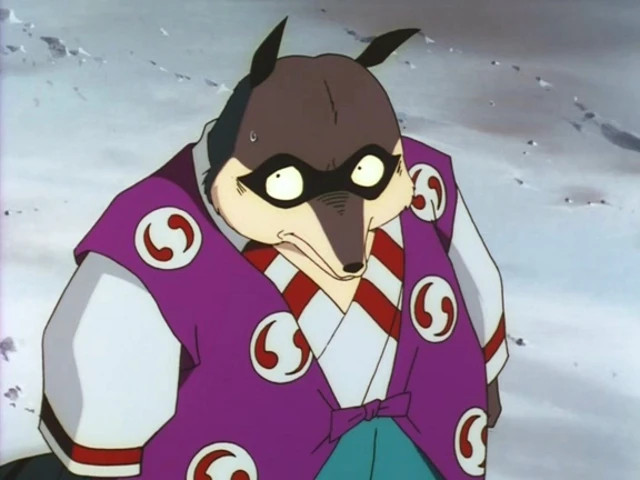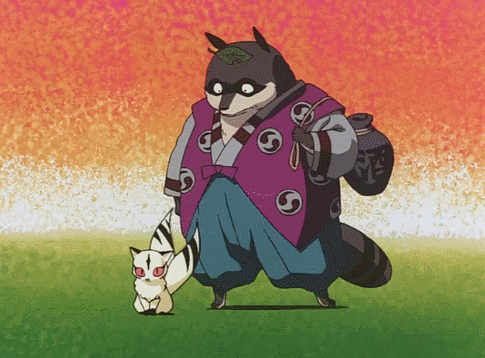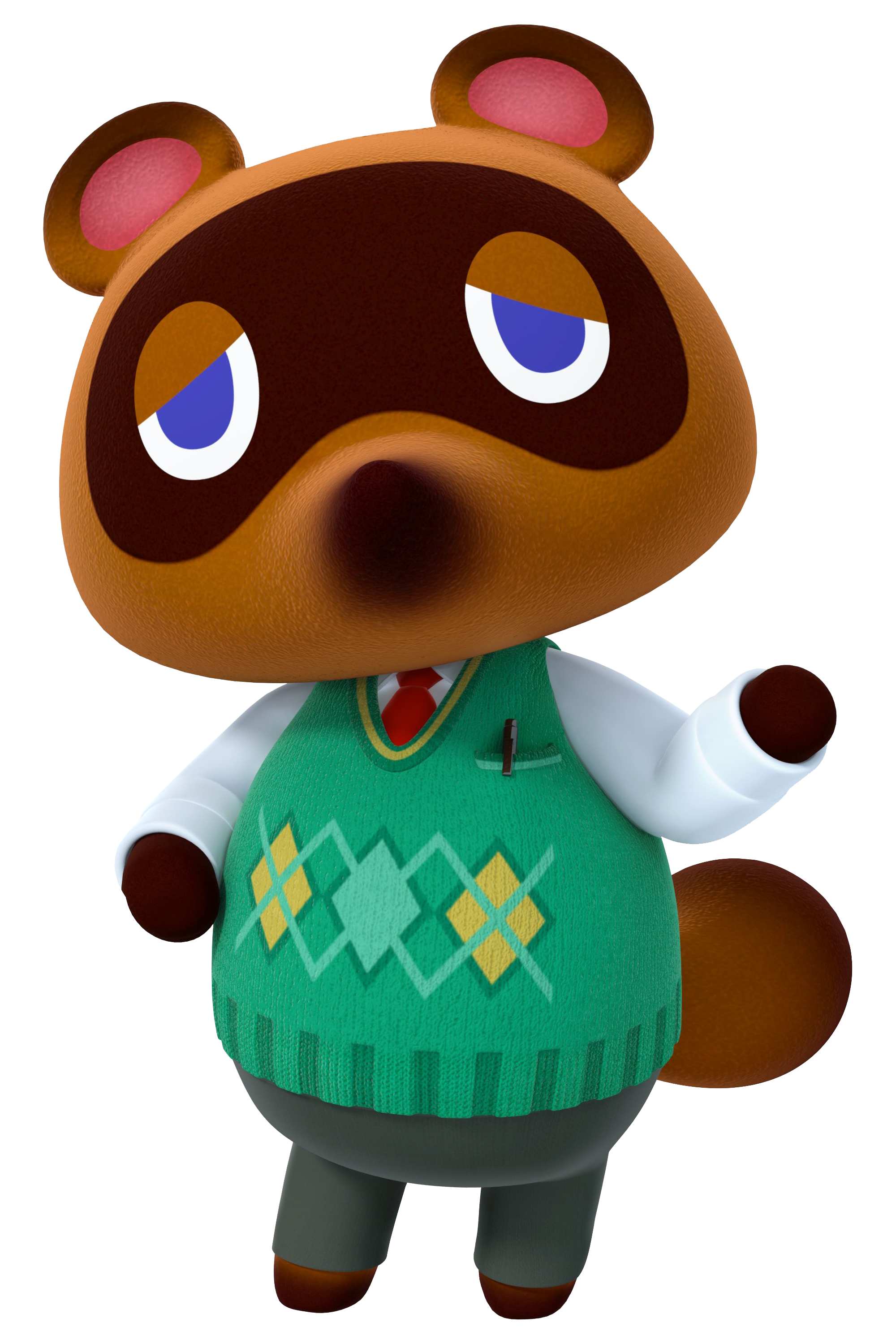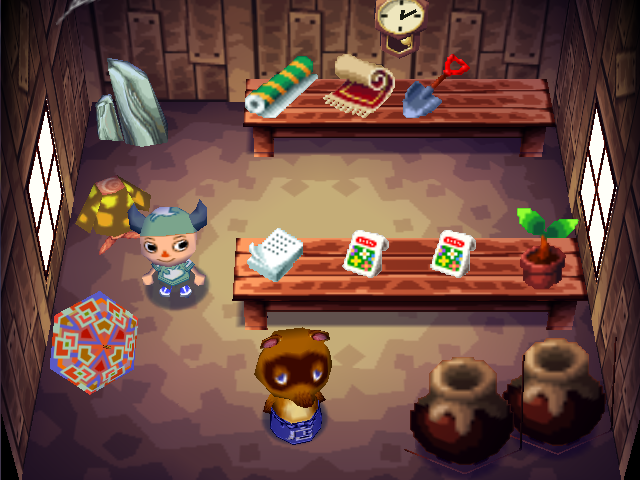Overview
One of the yokai creatures I decided to base my final major project on is the Tanuki. The tanuki is a magical shape-shifting creature, originating from old Chinese folklore and fox lore. In the Japanese version of the Tanuki, it possesses a big belly, giant scrotum and sake bottle.
Real Tanuki.
The tanuki is also a real animal, 狸 or たぬき had no direct translation and is often referred to a raccoon dog in English. It looks similar to a badger and racoon with its distinctive stripes of black fur under its eyes but is actually an atypical species of dog. In old Japan, Tanuki was hunted for their meat, fur and their scrotal skin. “In the old days, metal workers in Kanazawa would wrap gold in the skin of tanuki testicles when making gold leaf. You want to hammer your gold to the thinnest sheet possible. So you need a skin that can stretch a long way without breaking. It was said a tanuki scrotum could reach the size of eight tatami.” (Tofugu, 2015) Within folklore, the mythical tanuki is known for its giant balls and it is said that this is the reason why this feature came to life.


Tanuki in Japan
The Tanuki is often known to scheme against human, records of tanuki weren’t known till late 16th and early 17th century where they appear in Edo-era stories. The first documented appearance of a tanuki like creatures is in Nihonshoki, where it is called a mujina. During the Heian and Kamakura periods, tanuki appeared in setsuwa. A short story (setsuwa 説話) from the 13th century describes a story in which a mountain hermit, after years of deep devotion, begins to receive nightly visits from the Bodhisattva Fugen on his white elephant. One evening a hunter who brings food to the hermit is invited to witness the holy vision. But when Fugen appears, radiating a beautiful light, the hunter is suspicious. Why would he, a killer of animals, be permitted this glimpse of the divine? And so he fits an arrow to his bow and shoots at the image. The light goes out and a crashing sound is heard. In the morning, hunter and hermit follow a trail of blood to the bottom of a ravine where they find a dead tanuki with an arrow in its chest. (Mills, 1970)
Where these tricksters can transform into any living or inanimate shapes. Real Tanuki lives in forests and mountain valleys and therefore often shown playing tricks on hunters and woodsmen. They also enjoy misleading scholars and shapeshift into Buddhist monks. They also have the ability to cast illusions, turn pebbles and leaves into fake money or dung into food, there has even been storied where they conjured up mirages of entire cities.
This is a translated story from Hyakumonogatari Kaidankai (百物語怪談会) which is a ghoulish compilation of stories that come from various villages, the first version was published in 1677.
There are a number of stories following a similar theme where the Tanuki would imitate important figures within human society and cause chaos just to humour themselves. An example:
Translated from Edo Tokyo Kaii Hyakumonogatari
“In Bushu, Tanma-gun, in the village of Bunkokuji, the village headman Heigo was once visited by a tanuki who had disguised itself as a Buddhist monk. The tankuki claimed to be a monk from the Murasaki Otoku temple in Kyoto, and was under a vow of silence so could only communicate by written notes.
Bunkokuji was just a small, countryside village and the headman was honored to have such a holy guest, one who was so diligent in walking the eight-fold path of the Buddha. He invited the monk to stay with him and be fed as a guest.
Now, the handwriting of this monk was most peculiar. He freely mixed the styles of artful Chinese calligraphy and machine-printed Japanese with some strange flourishes that Heigo had never seen before. There were many grammatical mistakes as well, and Heigo thought it looked like the sort of thing that a tanuki would write.
By the morning, the monk had disappeared, and outside his house, Heigo found the body of a tanuki who had been torn apart by local dogs. His suspicions were confirmed.
There are many such stories of tanuki writings that have been passed down through the years.” (Davisson, 2011)
Origin of Giant Scrotum
One of the most prominent features of the Tanuki is its large scrotum, in Japanese slang these are known as Kinbukuro 金袋, or “money bags.” Tanuki’s large scrotum does not mean over-indulgence in sex, but rather “luck with money.” The most accepted explanation for his scrotum comes from Ōwaku Shigeo 大和久重雄 in his book Hagane no Chishiki 鋼の知識 (Knowledge about Steel; Diamond Shakan, 1971). Writes Alice Gordenker in the 15 July 2008 Japan Times: “Ōwaku traces the

super-size scrotum story to metal workers in Kanazawa Prefecture. To make gold leaf, these craftsmen would wrap gold in a tanuki skin before carefully hammering the gold into thin sheets. It was said that gold is so malleable, and tanuki skin so strong, that even a small piece [of gold] could be thinned to the size of eight tatami mats (Hachijōjiki 八畳敷き; about 12 sq. meters). And because the Japanese for ’small ball of gold’ (kin no tama 金の玉) is very close to the slang term for testicles (kintama 金玉), the eight-mat brag got stuck on tanuki’s bag. Soon, tanuki statues began to be sold as prosperity charms, purported to stretch one’s money and bring good fortune.” In the 19th Century, various Japanese artists created different woodblock prints showing the Tanuki’s large scrotum in creative ways.



Modern Tanuki
Within modern Japan, the tanuki is commonly depicted with a bottle of sake in one hand and a promissory note (a note that exempts it from paying for things) in the other. It is said that “Emperor Hirohito made a visit to the town of Koga in 1951. Koga is the centre of ceramic production in Shiga. So naturally, the street was lined with flag-waving tanuki statues to honour his visit. The Emperor was so tickled that he wrote a poem about the tanuki. The statues took off in popularity after this celebrity endorsement.” (Tofugu, 2015) Hence the modern depiction of the tanuki we see today.
The legendary tanuki has eight special traits that bring good fortune, possibly created to coincide to the hachi symbol (八, meaning ‘eight’) often found on the sake bottles the statues hold. The eight traits are these:
- a hat to be ready to protect against trouble or bad weather;
- big eyes to perceive the environment and help make good decisions;
- a sake bottle that represents virtue;
- a big tail that provides steadiness and strength until success is achieved;
- an oversized scrotum that symbolizes financial luck;
- a promissory note that represents trust or confidence;
- a big belly that symbolizes bold and calm decisiveness; and
- a friendly smile.


References

Pompoko – 平成狸合戦ぽんぽこ
“A community of magical shape-shifting raccoon dogs struggle to prevent their forest home from being destroyed by urban development.” (IMDB, n.d.)
This is a great reference for my Tanuki character as it gives me insight on the various aspects that make a Tanuki’s personality. It was also the film that educated me on what the Tanuki is. Prominent testicles are an integral part of tanuki folklore, and they are shown and referred to throughout the film, and also used frequently in their shape-shifting, an example is when they used it as parachutes.


Inuyasha (犬夜叉)
 “A teenage girl periodically travels back in time to feudal Japan to help a young half demon recover the shards of a jewel of great power.” (IMDB, n.d.)
“A teenage girl periodically travels back in time to feudal Japan to help a young half demon recover the shards of a jewel of great power.” (IMDB, n.d.)
Within this anime, a character Hachiemon 八衛門 “Eight Gate of Protection” is an anthropomorphic Tanuki who has shapeshifting powers and can fly in the form of a giant gourd. They have used various key features that form the mythical Tanuki. They include the eight virtues in the name of the character by appointing it ‘Eight Gat of Protection’ in addition to this it has shapeshifting powers same as the folklore and it turns into a gourd. During the Edo  period gourds were often dried and made into sake bottles which Tanukis are often seen with.
period gourds were often dried and made into sake bottles which Tanukis are often seen with.

Super Mario
 Super Mario (Japanese: スーパーマ is a series of fantasy platform games created by Nintendo featuring their mascot, Mario. In Nintendo games, Super Mario Bros. 3, Super Mario 3D Land, New Super Mario Bros. 2 and Super Mario 3D World Mario can wear a Tanooki Suit. By doing so his appearance changes to a tanuki and gaining the ability to fly, spin his tail to attack enemies and shapeshift into a statue similar to the tanuki I’ve researched.
Super Mario (Japanese: スーパーマ is a series of fantasy platform games created by Nintendo featuring their mascot, Mario. In Nintendo games, Super Mario Bros. 3, Super Mario 3D Land, New Super Mario Bros. 2 and Super Mario 3D World Mario can wear a Tanooki Suit. By doing so his appearance changes to a tanuki and gaining the ability to fly, spin his tail to attack enemies and shapeshift into a statue similar to the tanuki I’ve researched.


Animal Crossing

Animal Crossing is a community simulation video game series developed and published by Nintendo, in which the human player lives in a village inhabited by anthropomorphic animals, carrying out various activities including fishing, bug catching, fossil hunting, etc. Within the game, a recurring character is Tom Nook who is a tanuki, although he describes himself as a racoon his name sounds similar to Tanuki.

Character Development
Through my research, I have identified the various details that I want to include in my character creation:
Bamboo Hat
From my research, I have found that modern Tanuki is often seen with a hat to which protects it from the weather. This is an important feature which often shows how the creature is different from regular animals. Below are examples of various examples of hats that I will be using as references for my character.
Sake Bottle
In addition to the hat, a sake bottle is also a key feature which allows people to differentiates the tanuki from other animals. As Tanukis are often seen with a sake bottle it is important to include this within the design of the character to show what the character is. For thousands of years, gourds were often shaped into bottles to carry liquids because of its hard shell. This was popular in Asia and would have been used for the tanuki. I will be using this concept for my character design and include the Japanese symbols on the bottle.
Promissory Note

Known as the Tsūchō 通長 or Chōzura 帳面, and commonly written with just one character Tsū 通, it represents Tanuki’s accounting ledger (his unpaid bills). This is another key feature that differentiates the Tankui from other animals. Although the Tankui is said to be able to turn pebbles and leaves etc into money, the promissory note was used to represent this ability.

Bag Formed From Scrotum
From the research I found that the abnormally large scrotum is also a key feature within Tanuki folklore, this is one the feature that makes it so popular today. I feel that I need to include this aspect within the character design, however, I don’t want to just have it as part of the anatomy. Instead, I want to use the fact that it could stretch it out and turn it into an object. Within my character, I would like to have it formed as a bag on its back with objects inside. This means that I am still incorporating the key feature but in a discrete way. The large scrotum also seemed quite inappropriate and as I will be presenting it at the end of the year I didn’t want to include it into the project in an obvious way. As the characters are set in ancient Japan I want to have the bag be made out of wood or bamboo similar to the images below.






